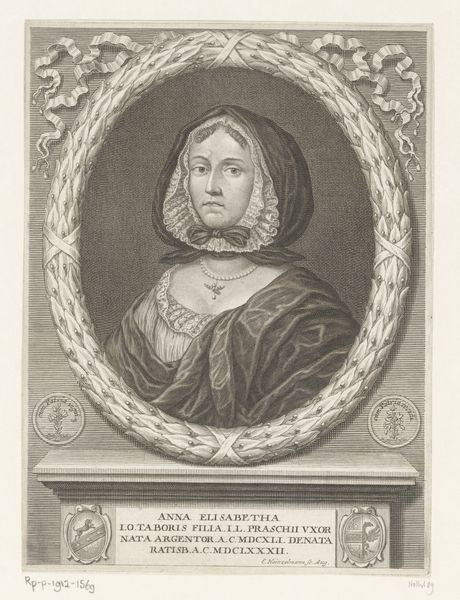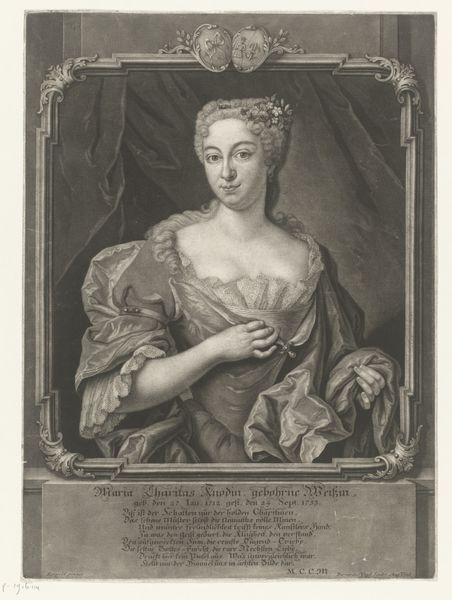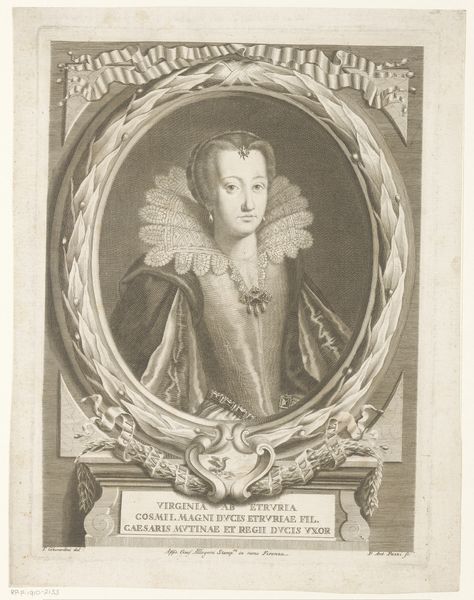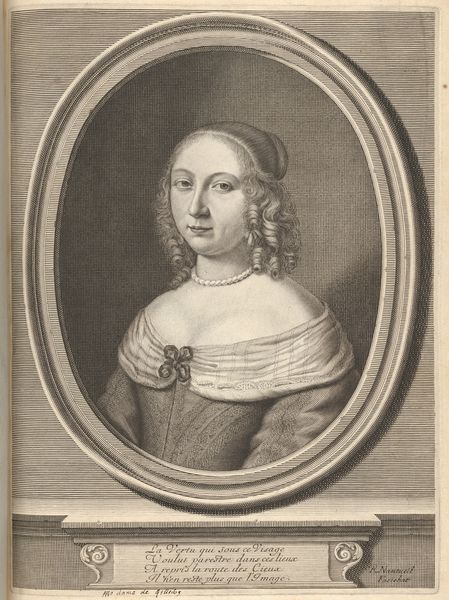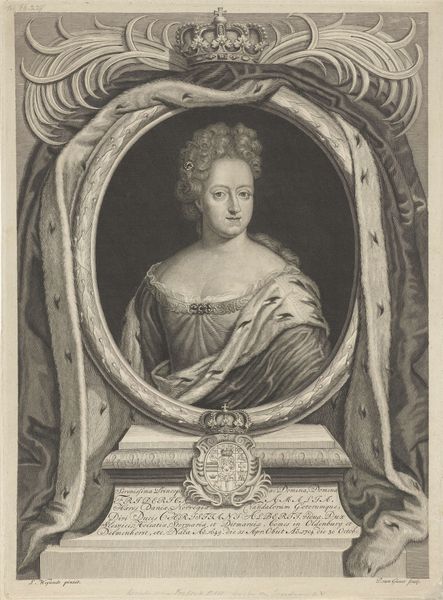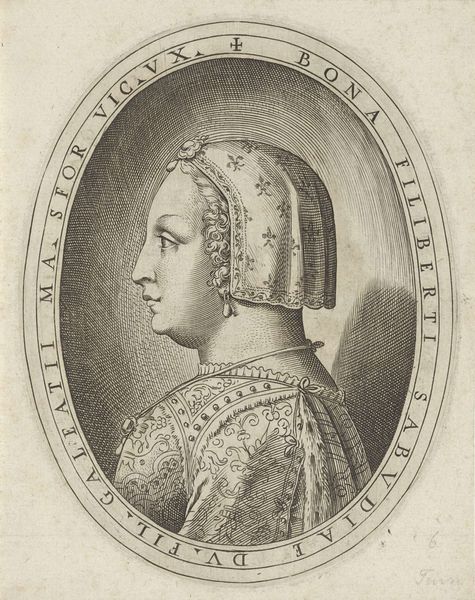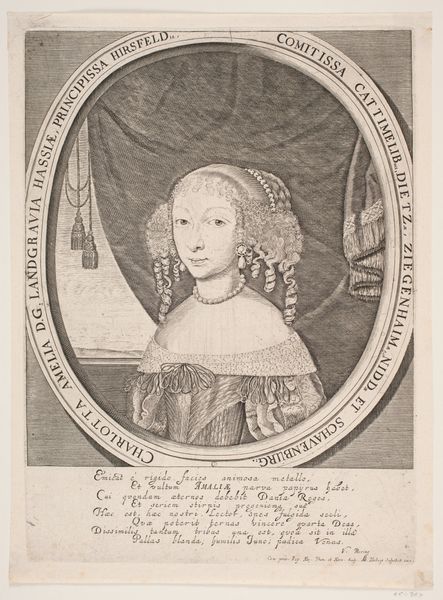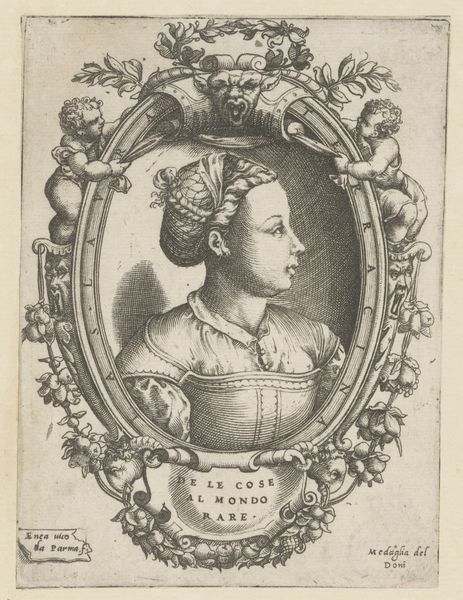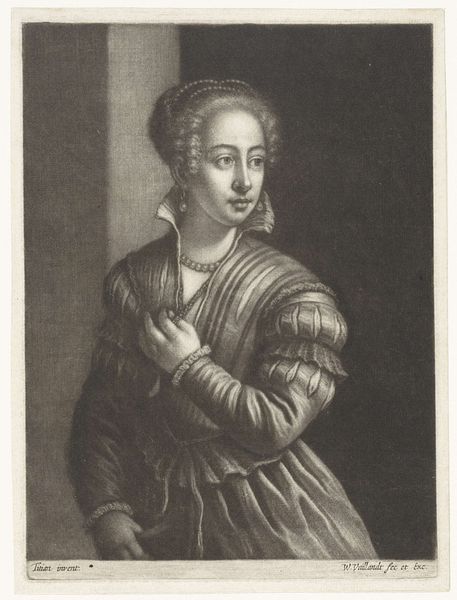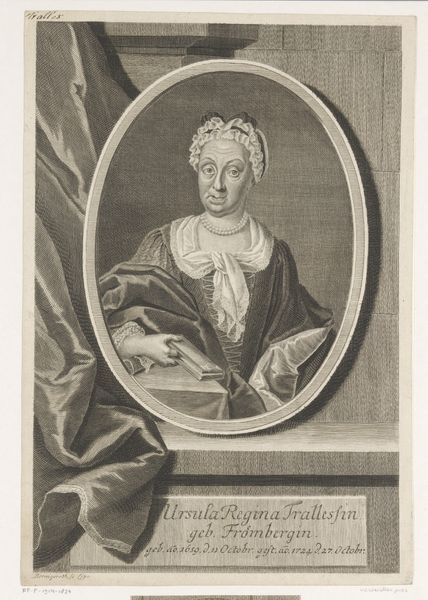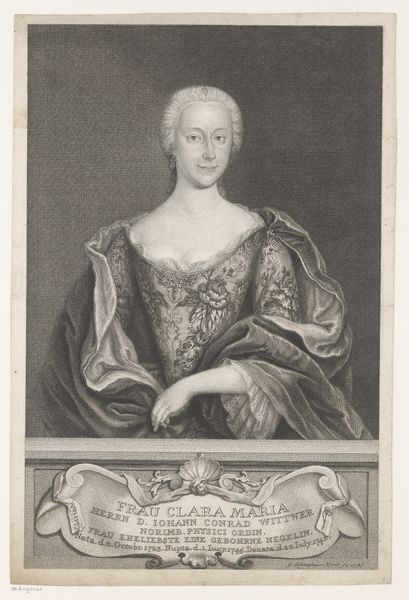
engraving
#
portrait
#
baroque
#
old engraving style
#
historical photography
#
history-painting
#
engraving
Dimensions: height 213 mm, width 160 mm
Copyright: Rijks Museum: Open Domain
Curator: Upon our left, we have Elias Hainzelmann's "Portret van Elisabeth von Stetten," created sometime between 1683 and 1693. It is currently held at the Rijksmuseum. Editor: The grayscale creates such a somber atmosphere. It is really amplified by the sitter's reserved gaze and, perhaps even more interestingly, by the oval composition surrounded by an ornamented laurel frame. Curator: It's compelling to consider Elisabeth von Stetten's position within the context of her era. As a woman of apparent high status, she occupied a space where lineage and marriage defined her power. The portrait becomes a statement, a construction of identity reinforcing social norms and expectations. Editor: Precisely. Observe how Hainzelmann carefully articulates the textures, the precise folds of her dress and the wisps of her elaborate hairstyle; you can sense her attention to detail in the ornamentation around the border. It all emphasizes a calculated presentation of status. The inscription below—birth and death—effectively creates a plinth for an important person. Curator: Let’s think about that inscription. "Nata Augusta Vind" informs us that she was born in Augsburg, which can become our window into understanding how wealth, trade, and geographical alliances impacted her very existence, informing the intricate networks of early modern European society. Editor: The framing is definitely meant to create some type of visual separation from the physical realm. It has a quasi-divine effect, presenting her image for posterity and perhaps attempting to secure her place in history and in memory. It's interesting to note the symmetry, the calculated balance within the pictorial space, giving it that rather typical baroque quality. Curator: In essence, it's a visualization of power—encoded in the symbolism, in the technical execution, and deeply rooted in its socio-historical milieu. What might a feminist lens reveal about her agency or lack thereof in such a representation? Editor: Through a formalist perspective, we understand how such art constructs not only visual narratives but also a powerful sense of control, legacy, and visual unity, achieving that sought-after aesthetic balance typical of baroque portraiture. Curator: A layered perspective that allows us to better understand and perhaps, even empathize with her image.
Comments
No comments
Be the first to comment and join the conversation on the ultimate creative platform.
